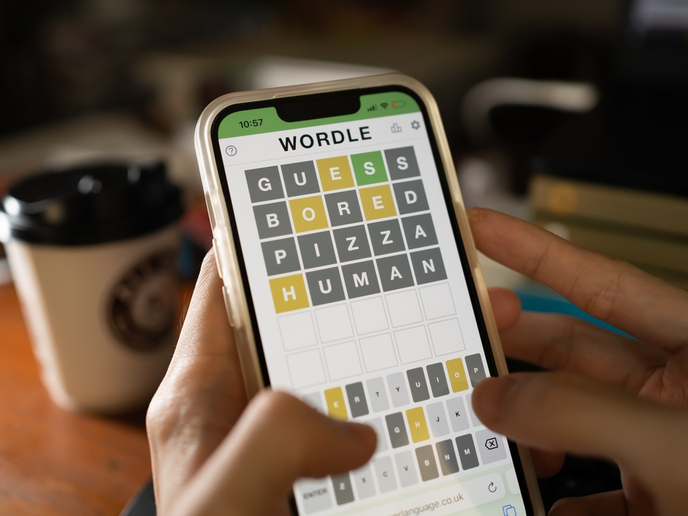What’s the best strategy for Wordle?
From crosswords to Wordle, a lot of word games rely on us filling in the blanks. But are some blanks more useful than others? Yes, says Ana Ulicheva(opens in new window), a psycholinguist at the Royal Holloway University of London. Knowing the first letter makes it easier to guess the rest – in English at least – and this phenomenon is down to how a word is pronounced, and how information is stored within it. “Writing is for encoding sounds and meanings, so when we see words, we automatically translate them,” says Ulicheva. Take the word ‘brave’ for example. If we only had the letter ‘b’, there is only one way to pronounce this in English, a hard ‘bah’ sound. If we only had the ‘e’ at the end, however, this could be pronounced in more than one way – think of its sound in ‘brave’, compared to ‘three’.
Guess the word
These connections between word spelling, sound and meaning are reflected in our memory of words. Letters that are most easy to predict are likely to trigger stronger memories – or possible solutions – for the rest of a word. We actually do this kind of guesswork all the time: when we read, our brain latches on to the beginning of words, and fills in the rest based on prediction. This allows us to scan through text and understand its meaning, without having to individually look at every letter. When a complicated or unknown word comes up, our brain has to do a little more processing. We read from left to right in English, and this is also the way information is encoded. More information is stored at the start of a word, and gradually less towards the end. This is also helpful when guessing words, as our mind is more likely to come up with options once the first letter is locked in place. ‘E’ is the most common final letter in English five-letter words, ending over 20 % of them, so can be less useful than you hope. Guessing words based on the middle section is tricky too, because this is often where the vowels are. “Vowels are most problematic when it comes to English because they have lots of different pronunciations,” adds Ulicheva. They also encode less information. If you drop all the vowels from a word, you may still be able to ‘ndrstnd’ it. If you just have a group of vowels, it’s a lot more ‘iiu’ (that is to say, difficult).
A foolproof Wordle strategy
So what’s the best Wordle strategy? “If you’re lucky, then guessing the first letter or a couple of letters gives you more predictive power,” remarks Ulicheva. This is easier said than done, she admits. Through the EU-funded PhonPred project, Ulicheva researched how our linguistic abilities are shaped by our environment. She used computational analysis on vast data sets to uncover ‘phonotactic regularities’ – underlying patterns that constrain how sounds are combined within words. In English, the sounds ‘k’ and ‘n’ can’t combine – as in the word ‘knife’. Yet in German they do. Through a series of experiments involving both real and made-up words, PhonPred discovered that humans are very astute at picking up such regularities from their linguistic environment, and at different levels that link sound, spelling and meaning. People with better reading experience, with wider vocabularies, have a better knowledge of these underlying regularities. “So one of the strategies for playing Wordle better is literally to just read more,” says Ulicheva. “I mean, it’s kind of obvious, but it is true.” Click here to find out more about Ana Ulicheva’s research: Minding your Ps and Qs: How linguistic environment influences literacy



